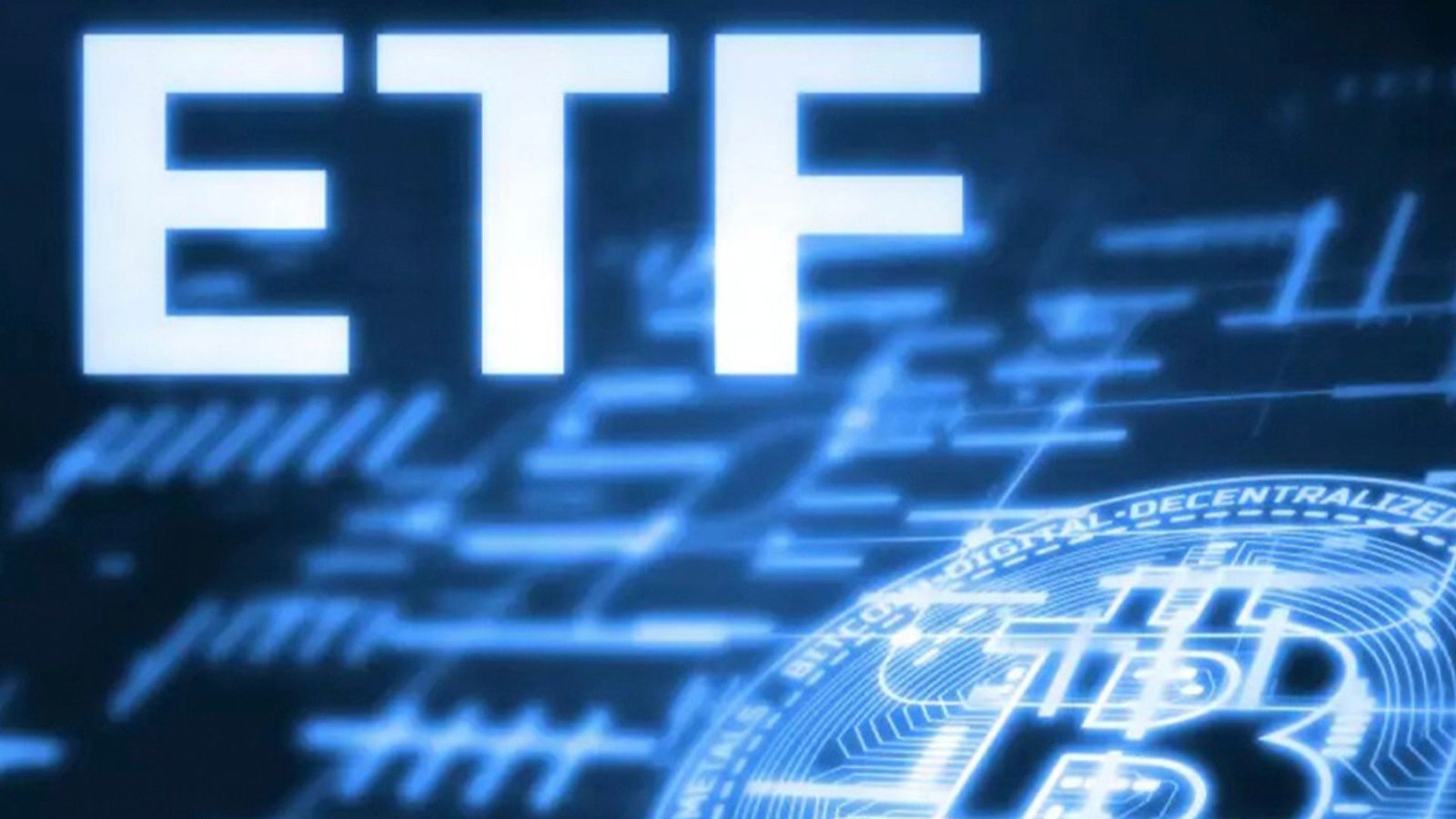Bitcoin has long been celebrated as a decentralised digital currency, but beneath its public ledger lies a surprisingly uneven distribution of ownership. A handful of “whales,” institutional entities, and early adopters control a large portion of the supply, while retail investors hold smaller slices. But over the past year, the advent of spot Bitcoin ETFs has begun to shift that balance. As these regulated exchange-traded funds open the door for new kinds of investors, custody models change, and large-scale inflows reshape how Bitcoin is held and allocated across the ecosystem.
This article explores Bitcoin ownership distribution in the post-ETF era, investigating how ETFs have shifted not just the volume of holdings, but the structure of ownership. We’ll walk through pre-ETF distribution, how spot ETFs are accumulating Bitcoin, and the implications for decentralisation, institutionalisation, and market dynamics. By the end, you’ll understand how ETFs have altered the terrain of Bitcoin ownership — and what that means for you as an investor or observer.
The Pre-ETF Landscape of Bitcoin Ownership
Before spot-Bitcoin ETFs were widely approved, most of the Bitcoin ownership distribution was determined by wallets, exchanges, early adopters, and institutional players that directly held Bitcoin. In that era, self-custody and direct holdings dominated, and many of the largest Bitcoin holders were “whales” — individuals or entities controlling thousands of BTC in a single wallet.
At that time, retail investors (wallets holding relatively small amounts) collectively held a modest share of total supply compared to the large holders. These whales had outsized influence over supply movements; large transactions from whales could trigger market swings. Ownership concentration was high, and many smaller holders had limited influence on price discovery.
Moreover, institutions that held Bitcoin often did so through trusts (e.g. the Grayscale Bitcoin Trust) or direct purchase. Custody, regulatory overhead, and technical hurdles limited the ability of many traditional investors to own Bitcoin directly. That, in effect, kept distribution skewed toward those with technical capacity, risk tolerance, or early access.
The result was a Bitcoin ownership distribution that favoured large holders, with the rest of the network fragmented across retail wallets and many small-balance addresses that rarely influence broader market dynamics.
What Changed When Spot Bitcoin ETFs Arrived
Regulatory Approval & On-Ramp for Institutional and Retail Investors
One of the biggest inflexion points came when U.S. regulators approved spot-Bitcoin ETFs. That decision created a regulated vehicle for buying Bitcoin exposure through a traditional brokerage infrastructure. Investors who previously might have needed to set up wallets, deal with exchanges, or worry about custody can now purchase ETF shares via their brokerage account.
This regulatory shift dramatically lowered the barrier to entry for certain institutional investors, and in many cases, retail investors as well. It allowed Bitcoin exposure inside retirement accounts, mutual-fund-style structures, and traditional asset allocation frameworks. As a result, flows into Bitcoin shifted — instead of going directly into individual wallets or exchanges, capital could flow into an ETF that holds Bitcoin on behalf of its shareholders.
Because those ETFs hold the underlying Bitcoin custodially, that means the custody-based portion of the ownership distribution has shifted. Instead of being dominated by self-custody wallets or exchanges, an increasing portion of the circulating Bitcoin supply is now held by custodians on behalf of ETF issuers.
Capital Flows & Concentration via ETFs

Since the launch of spot-Bitcoin ETFs, cumulative inflows have been large. According to some analyses, U.S. spot Bitcoin ETFs now hold over 1.2 million BTC, more than what Satoshi Nakamoto is believed to hold.
That is a non-trivial slice of total supply, showing how ETFs are accumulating Bitcoin at scale. When tens or hundreds of thousands of BTC are moved into ETF custody, that reduces the share held in self-custody wallets, exchanges, or by independent holders.
Institutional investors have increased exposure: For instance, in Q4 202,4, professional investors held $27.4 billion worth of Bitcoin ETFs, up significantly from earlier quarters.
Moreover, research suggests that ETFs are shifting the balance of ownership away from whales or mid-tier holders, toward custodied institutional holdings. One analysis finds that ETFs now drive price discovery more often than whale-driven transfers.
Effects on Ownership Distribution — Retail, Whale & Entity-Scale Categories
categorising holder types into retail (small-wallet holders), whales (mid-to-large wallets), and entity-scale holders, analysts can trace how the distribution has evolved. One report found that as of 2020, retail holders held about 17 % of circulating Bitcoin, while mid- and large-scale wallets held greater shares.
But post-ETF, that dynamic is changing. As ETF custodians accumulate, the relative percentage held by whales may shrink (even if absolute amounts remain similar) because total supply held in ETFs increases. Entity-scale custody via ETFs begins to compete with large self-custody holders. Over time, that may lower the market influence of individual whales and increase institutional / fund-based control.
In effect, the ownership distribution curve becomes more weighted toward custodial, regulated entities — even though retail investors (via their ETF shares) may still have indirect exposure.
Implications of ETF-Driven Ownership Shifts
Decentralisation vs. Centralisation Risks
One of the core tensions in Bitcoin’s ideology is decentralisation. When ownership becomes too heavily concentrated — even if via regulated custodians — some of Bitcoin’s decentralising ethos may be challenged.
ETFs tend to use large custodians (for example, exchanges or custody providers approved by regulators). That means a few custodians may end up holding vast amounts of Bitcoin on behalf of ETF shareholders. This introduces custody concentration risk: if something happens to that custodian, or if regulatory oversight changes, the risk may cascade across many investors.
While regulated custody is significantly safer (in many respects) than unregulated or unsecure self-custody, it is still a single point of failure compared to fully distributed, self-custody wallets.
At the same time, ETFs bring other benefits: governance standards, audited custody, insurance frameworks, and regulatory oversight, which reduce some types of risk associated with direct crypto holding. That makes the trade-off between decentralisation and institutional safety more nuanced.
Impact on Volatility & Price Dynamics
As ETF flows grow, they can influence not only who holds Bitcoin, but how its price moves. Large inflows or outflows via ETFs can introduce liquidity, reduce bid-ask spreads, and potentially dampen volatility compared to the wild swings of earlier years.
Some academic and industry research indicates that after the introduction of spot Bitcoin ETFs, return volatility has decreased, or at least smoothed out relative to pre-ETF periods.
Moreover, ETF-based trading tends to happen during regulated market hours, with arbitrage and authorised-participant mechanisms smoothing the price between the ETF share price and the underlying asset. That can stabilise short-term price discrepancies, aligning ETF NAV with actual spot prices more tightly than unregulated exchange-based flows.
Because ETF flows may be more persistent (rather than erratic whale transfers), they create a more structural, long-term component of accumulation, which may reduce sudden large whale-induced shifts.
Institutional Allocation & Portfolio Theory
With Bitcoin being accessible via ETFs, asset managers, hedge funds, pension funds, and family offices can include Bitcoin (or at least Bitcoin exposure) more readily into diversified portfolios.
This shifts the perception of Bitcoin from purely speculative asset to one that can contribute to modern portfolio theory frameworks: risk-return trade-off, correlation with equities, inflation hedging properties, and so forth.
Because ETFs facilitate more seamless inclusion under regulatory frameworks (e.g. 401(k)-style or retirement-account rules), institutional allocation to Bitcoin may rise, which further increases the proportion of Bitcoin that is effectively “owned” by institutions, even if the beneficial holders include retail via ETF shares.
How Ownership Trends Might Continue to Evolve

Future ETF Expansion & Competitive Landscape
The shift in Bitcoin ownership distribution is unlikely to stop here. More ETF products may be approved, or existing ones could grow larger. As ETF issuers compete on fees, marketing, and asset-gathering, their share of total Bitcoin may increase further.
Competitive pressure may also push down fees, making ETFs more attractive relative to direct purchase. That could further channel more capital through ETFs rather than exchanges or self-custody. Over time, ETF-based holdings could represent a larger slice of circulating supply.
Role of Whales & Direct-Holders in a New Era
Even as ETFs grow, whales and direct holders may still play an important role. Large holders may reduce their influence if their holdings remain static while total ETF-held Bitcoin grows. But whales could adapt by shifting into ETFs themselves or negotiating with custodians.
Additionally, some high-net-worth individuals or institutions may prefer direct custody for philosophical or security reasons. That means the coexistence of self-custody whales and ETF-custody institutions may remain. But the relative power balance may continue to tilt toward regulated custody.
Regulatory Shifts & Custody Innovations
Regulators could demand new transparency, even stricter oversight, or impose limits on how much any one custodian or fund may hold. Custody innovations (multi-custodian models, decentralised custody, insurance-backed custody, or hybrid models) may emerge to respond to concentration concerns.
Also, the approval of ETFs in additional jurisdictions — or expanding beyond Bitcoin to other cryptocurrencies — may further reshape how ownership distribution evolves globally (not just in the U.S.).
Conclusion
The introduction of spot-Bitcoin ETFs has triggered one of the most significant shifts in the Bitcoin ownership distribution since Bitcoin’s earliest days. What used to be dominated by self-custody wallets, exchanges, and whales is gradually giving way to an institutionalised custody model under regulated frameworks. While that brings benefits in terms of accessibility, liquidity, and smoother price dynamics, it also raises questions about decentralisation, concentration risk, and the evolving balance of power in the Bitcoin ecosystem.
As ETF-based holdings continue to grow, the structure of who really owns Bitcoin (or controls access to it) will evolve. Investors and observers must now consider not only how much Bitcoin exists, but who holds it, how it’s held, and under what oversight. The rise of ETFs doesn’t mean self-custody is obsolete—but it does mean the narrative around Bitcoin ownership is changing in profound ways.
FAQs
Q: How much of the total Bitcoin supply is now held by ETFs?
Estimates suggest U.S. spot Bitcoin ETFs hold over 1.2 million BTC in aggregate. That represents a growing percentage of circulating supply, though the precise percentage fluctuates with total supply.
Q: Does ETF-based ownership reduce decentralisation?
Yes, to some degree. When large custodians hold Bitcoin on behalf of many investors, custody becomes centralised in fewer institutions. That increases concentration risk, though regulatory oversight may mitigate some dangers.
Q: Are whales becoming less important in a post-ETF world?
They may hold similar absolute amounts, but their relative influence is likely shrinking as ETF-custodied Bitcoin grows. Whales will remain relevant — especially for large transactions — but their dominance in shaping price trends may diminish.
Q: Does ETF ownership impact Bitcoin’s volatility?
ETF flows tend to be more structured and persistent compared to chaotic whale transfers. That can reduce short-term price shocks, smooth out supply shocks, and may reduce volatility somewhat, relative to pre-ETF dynamics.
Q: Should an average investor prefer an ETF or direct ownership?
It depends on your priorities. ETFs offer simplicity, regulatory oversight, liquidity through traditional broker networks, and easier inclusion in retirement or brokerage accounts. Direct ownership provides full control, self-custody, and use-case flexibility — but requires managing security, risk, and technical responsibility.
Read more: Bitcoin Derivatives Market: Options Flow Reshaping Price Trends


